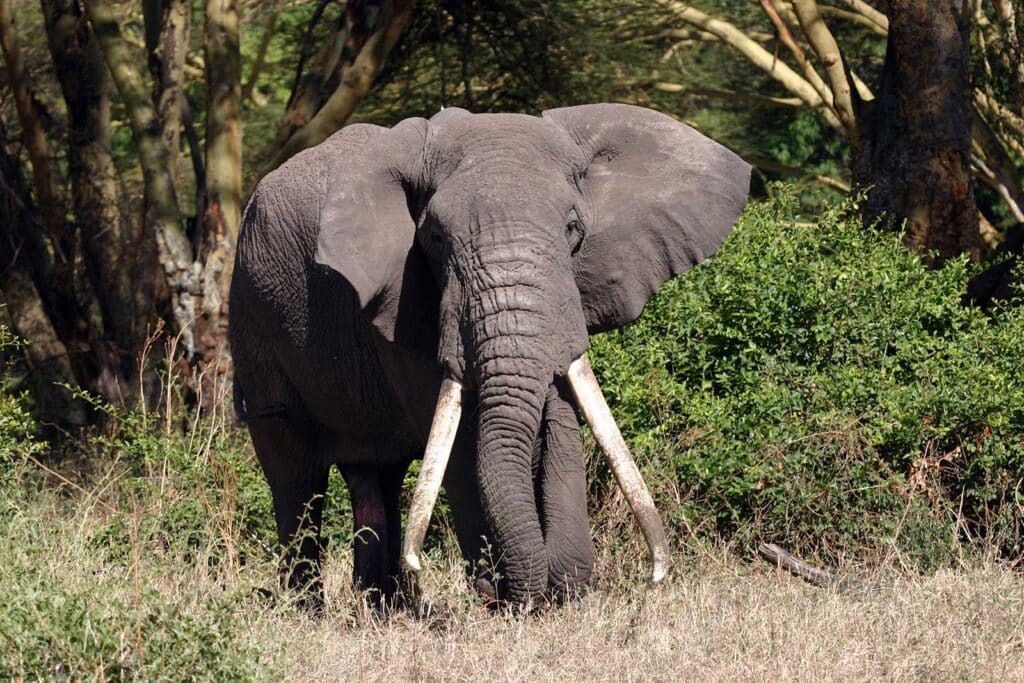“Give him whatever he wants!” my husband shouted as I scrambled out of the path of the angry honey badger. Dust flying, it barreled into the dinner table of our camp in the Okavango Delta of Botswana. Later, I’d find out my husband had actually said, “let him go wherever he wants,” but at the time, complying with the demands of the furry terrorist seemed like a perfectly reasonable directive.
As much as we often overland with the hopes of incredible wildlife sightings, encounters of the uninvited kind can be stressful situations. Think unruly marmots chewing through electrical wires, skunks spraying your pet, or a bear working its way through your ice chest. And while the threat of an apex predator outside your front door can feel like the most pressing danger, the smaller animals often have the most impact. Swarms of insects and nesting rodents can quickly ruin an otherwise great day in the wilderness. Here are a few tips about dealing with conflict with wild animals, both big and small:

Avoid Conflict in the First Place
The easiest way not to come into conflict with wildlife is to avoid close contact with them in the first place, particularly when camping for the night. Before choosing your campsite, have a thorough check of the area. Look for obvious game trails and take care not to block them, particularly if the trails lead to water. As the saying goes, an elephant never forgets, and a herd of them won’t let a vehicle stand in the way of moving along a historic route to a drinking hole. Elephants and rhinos can push even large vehicles out of the way. Moose and buffalo can become aggressive and charge if they feel threatened or corned by vehicles or people. Even more innocuous critters can be creatures of habit, and allowing them access to their usual routes is the easiest way to keep them from finding a way over, under, or through your vehicle.
Look for potential animal food sources in your chosen parking space. A decomposing log may be full of tasty grubs of the kind favored by hungry bears, and a bed of green grass in an otherwise dry area may be just the thing a hippo would seek out late at night. Keep your ears open for the sound of wasps, mosquitoes, and bees and even use your nose to detect animal smells.
Conflict can also occur when driving. Keep a lookout for wildlife while on the road, and avoid driving at night, if possible. After sunset, animals are more difficult to see and may seek the warmth of the road to lie down on. If you do come across a group of animals, make sure to give them plenty of space, allowing them to cross the road safely. Don’t honk or rev your engine, as spooking wildlife can cause them to injure themselves, drive them from food sources, and separate mothers from their babies. A frightened animal may turn aggressive in order to protect itself or its young.

Be Mindful of Food and Food Smells
When an animal tries to enter your vehicle, it is almost always trying to access food. Being mindful of food, food waste, and food smells are more ways to avoid conflict. Don’t leave food out unattended. Dispose of leftovers and garbage in wildlife-proof containers, and keep cooking and food prep areas clean.
This also goes for pet food. It’s easy to forget at the end of a long day of traveling to remember to bring in Fido’s food bowl, but remember that his food is designed to smell good to predators like him. That means it’s also extra tasty to wildlife.
Pay attention to outdoor cooking spaces and gear, too. Residual barbeque on the grill is awfully tempting for nocturnal predators. I will forever remember when an opportunistic hyena sauntered up to our barbeque to steal a porkchop. It was extra exciting because we were still cooking it and were seated just a few feet away. In this same park in Zimbabwe, park rangers carefully inspect incoming vehicles for citrus fruit, a strictly banned item due to the frequency in which elephants will tear apart a camp in search of oranges. And every good Boyscout knows it’s leftovers and garbage that attract bears. This is particularly true in areas where they’ve been conditioned to do so, thanks to humans not securing their trash properly. Sadly, such encounters not only lead to dangerous situations for humans but can result in park officials being forced to remove or exterminate problem animals.

Create Barriers to Entry and Eliminate Attractants
If you know there are likely to be critters around no matter what you do, the next step is to make it as hard as possible for them to enter your vehicle. EarthCruiser vehicles come with an available option insect screen for their house doors – a definite must for traveling through places like Alaska and northern Canada during spring and summer mosquito season. Our vehicles come well-sealed against the elements, which also forms a layer of protection against unwanted insect guests. One of ants’ favorite ways to access RVs is via power cables and sewer hoses, another advantage to EarthCruiser’s self-sufficiency.
Have a Plan for If Conflict Occurs
If you run into conflict with wild animals, having a plan for escape can lessen the damage to you and the local wildlife. Consider parking for the night with a clear exit path and backing in to make leaving quick and easy. EarthCruiser’s passthrough was designed for these kinds of situations, allowing easy access to the cab from the house so you can simply drive away.
Most animals want to avoid conflict as much as you do. Making noise or turning on your lights can scare wildlife away in a pinch, though it’s always best to take care not to spook animals unless necessary so as not to cause them to injure themselves or become defensive. I recently served on a panel about overlanding in Canada and Alaska at the PNW Overland Expo. Over and over, the audience wanted to know about keeping safe around bears. They were shocked when I told them that having grown up in Alaska and encountered bears frequently on hikes, in my campsite, and even in my backyard, my go-to advice was simply to make noise and let them know you’re there. A simple, loud “Hey bear, bear!” works the vast majority of the time. That said, having a canister of bear spray on hand in big predator country is always a good idea. Bear spray works against dogs, big cats, and even human attackers. You can even buy practice canisters of bear spray, filled with harmless liquid, that will let you rehearse and practice for the unlikely event you’d need to use the real thing.
By being thoughtful about animal behavior and our impact, we can ensure continued safe, enjoyable travels to our planet’s most wild and beautiful places. Careful site selection, clean camping habits, and a bit of knowledge can help to keep our interactions with wild animals photogenic rather than destructive or dangerous to us or wildlife.










